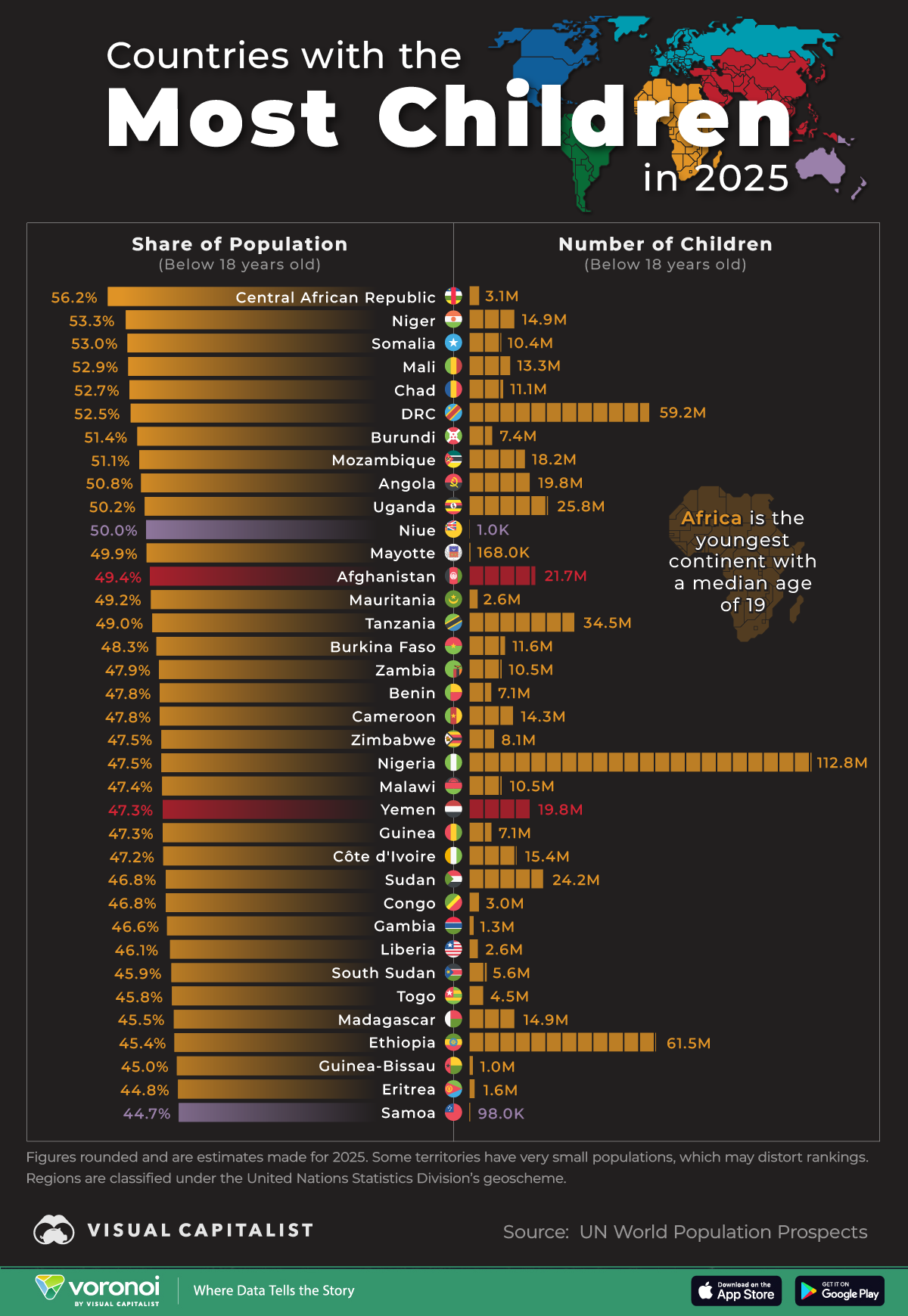Ranked: Countries With the Most Children in 2025
This was originally posted on our Voronoi app. Download the app for free on iOS or Android and discover incredible data-driven charts from a variety of trusted sources.
Key Takeaways
- The Central African Republic has the most children in 2025, as a share of the population (56.2%).
- Nigeria’s under-18 population surpasses 112 million—about equal to the entire population of the Philippines, the world’s 13th-most populous country.
The world is getting older on average, but not at the same pace everywhere.
In many parts of sub-Saharan Africa, children still make up the majority of the population, shaping everything from classroom sizes to consumer markets.
The visualization above ranks every country by the share of people under 18 in 2025, spotlighting nations where youthful energy is both an opportunity and a challenge.
Data for this graphic is sourced from the UN World Population Prospects estimates for 2025.
Ranked: Countries With the Most Share of Children in 2025
In the Central African Republic, 56.2% of the population is under 18, the highest share of children worldwide.
Note: Figures rounded and are estimates made for 2025. Some territories have very small populations, which may distort rankings. Regions are classified under the United Nations Statistics Division’s geoscheme.
In fact, roughly half the population in countries is under-18 in 11 countries, including Niger, Mali, and Chad.
By contrast, the global median for share of children is just 28%.
Noticeably, all of the top 10 countries are in Africa, and seven of them sit in the Sahel or Central Africa belt.
Fertility rates in this region routinely exceed five births per woman, and declines in child mortality have not yet translated into smaller family sizes.
This demographic momentum will keep populations growing even if birth rates fall, creating what economists call a “youth bulge”—a potential dividend if jobs and education keep pace, but a risk factor for instability if they do not.
Nigeria illustrates this phenomenon well.
Nigeria: A Superpower in the Making?
While its share of children (47.5%) ranks 21st, Nigeria stands out in sheer scale: 112.8 million Nigerians are under 18 in 2025.
This is roughly equal to the total population of the Philippines, the 13th most populous country in the world.
Nigeria’s booming youth market is already attracting investment in fintech, ed-tech, and entertainment.
Yet the same numbers strain power grids, classrooms, and job markets—underscoring the importance of sustained reforms in education and infrastructure.
Disenfranchised youth can lead to social unrest, and they are prime targets for terrorist groups as well.
Thus, understanding where the world’s children live is critical, for practical reasons like planning schools, digital infrastructure, and health services, which translates into broader social cohesion and development.
Learn More on the Voronoi App 
If you enjoyed today’s post, check out Countries With the Most Seniors on Voronoi, the new app from Visual Capitalist.
